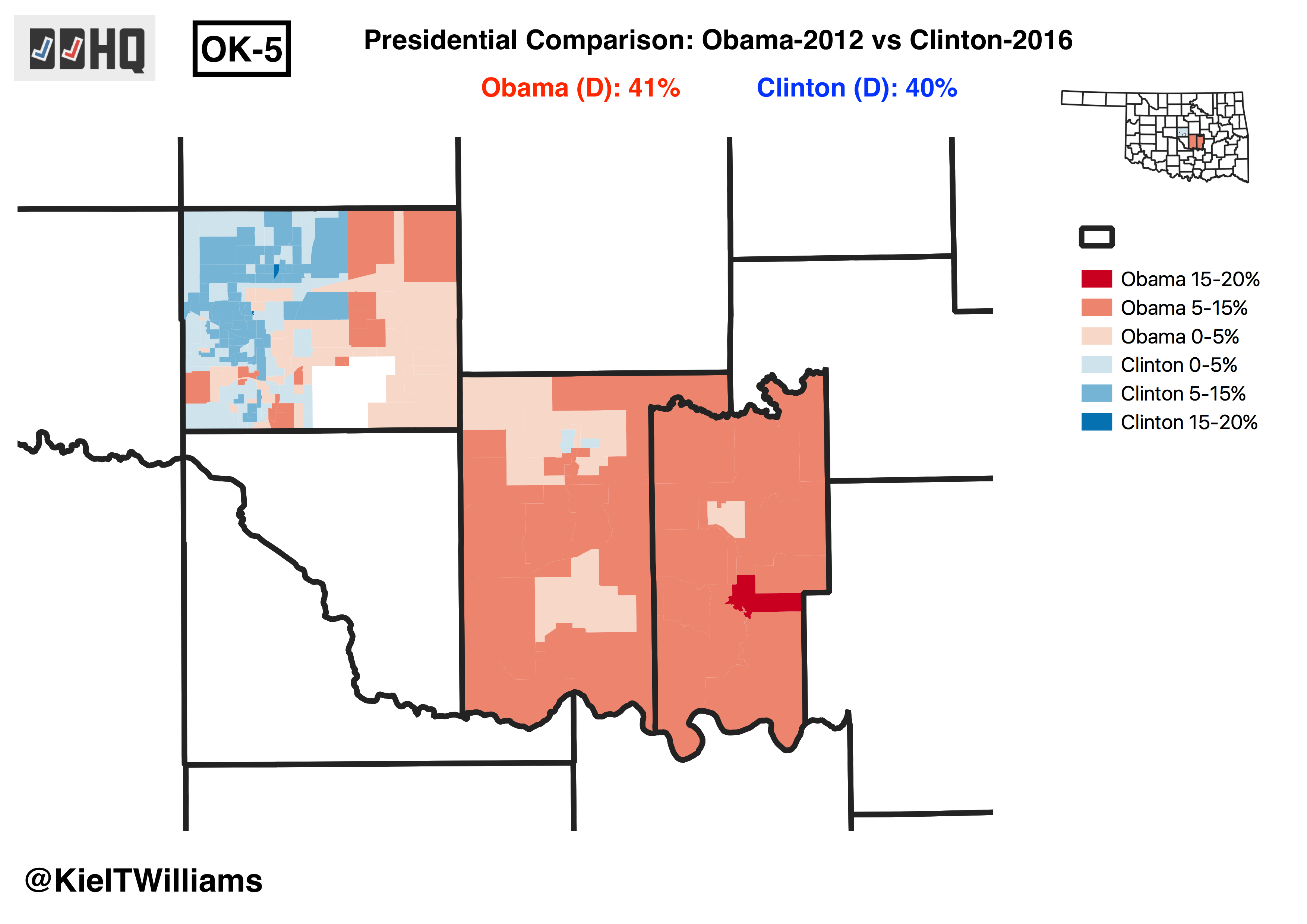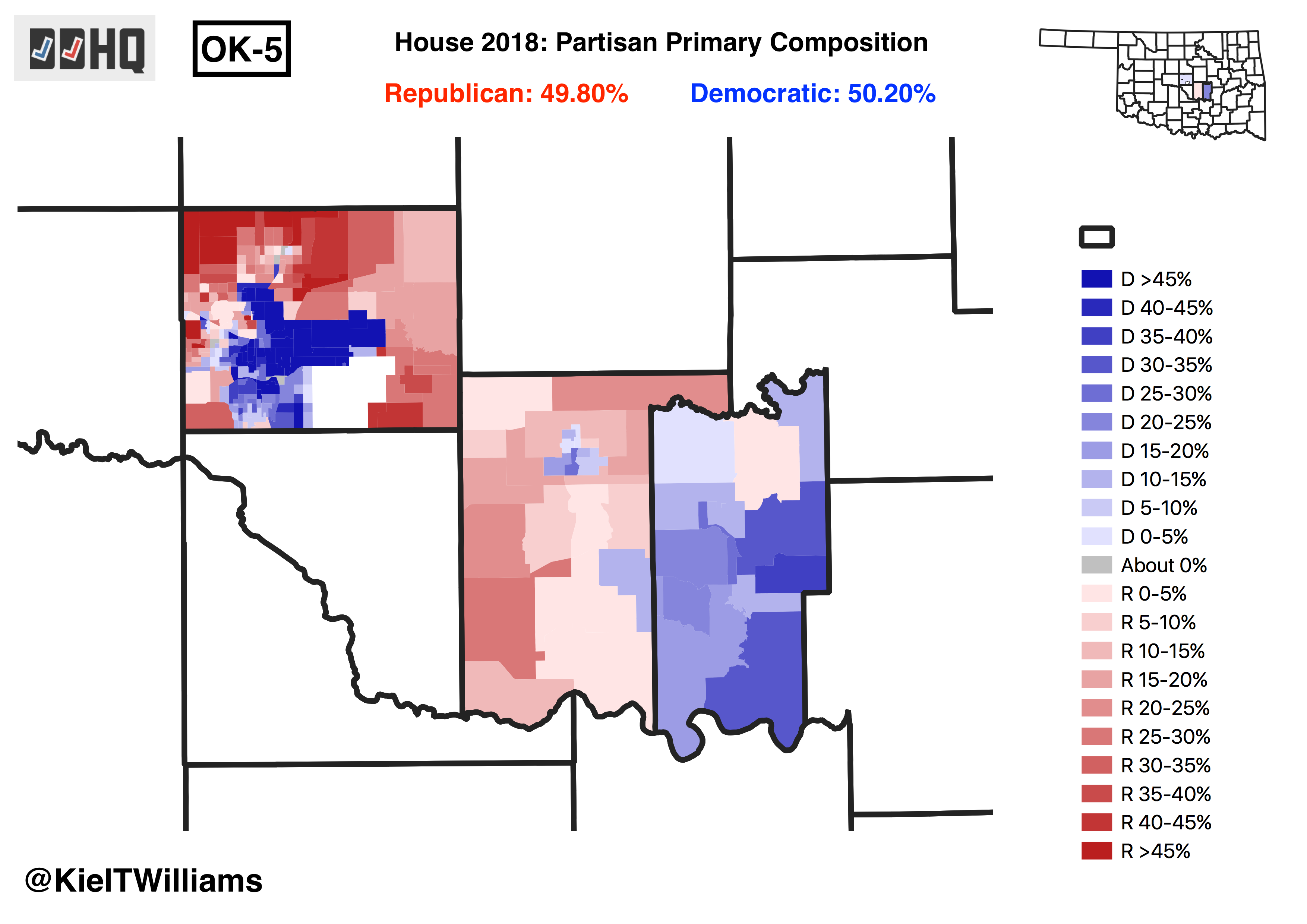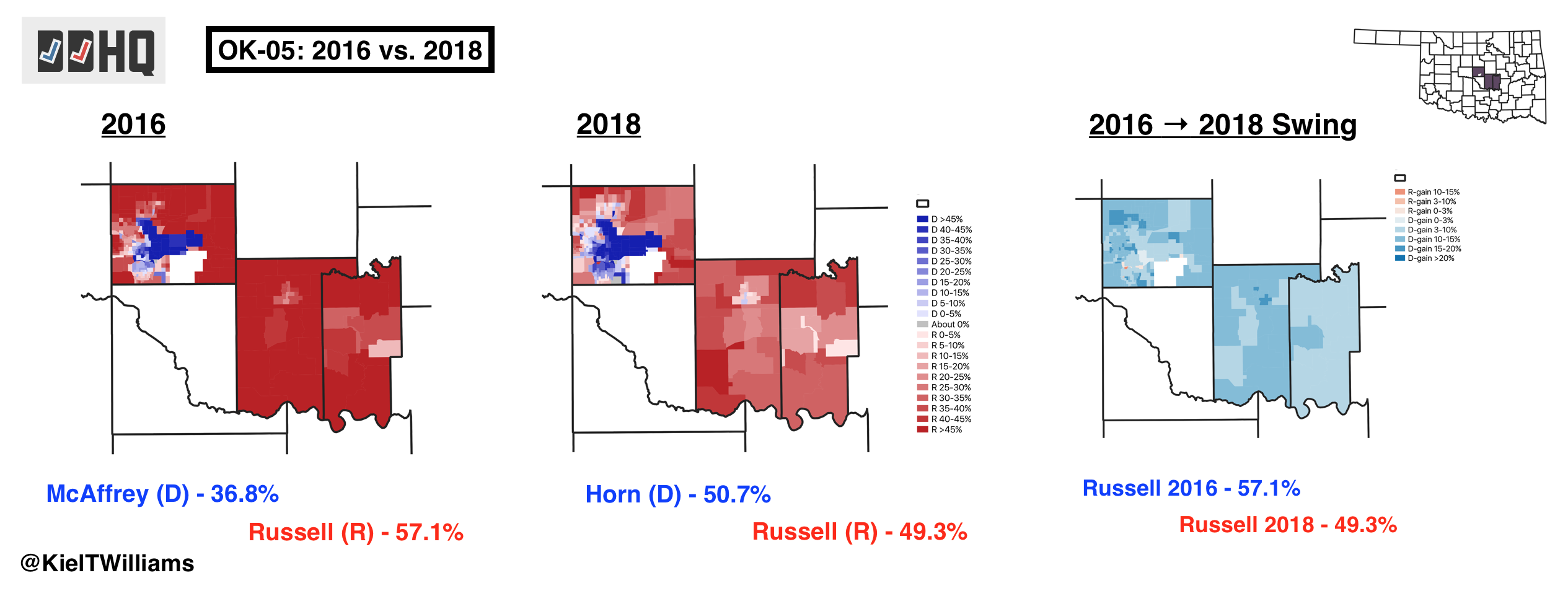Kendra Horn’s (D) stunning victory over incumbent Steve Russell (R) in Oklahoma’s R+10 5th district was one of the biggest 2018 midterm upsets. Russell won each of his previous elections by over 20 points, and national Republicans never expressed concern in the district. Russell ultimately raised-and-spent under $1 million.

Based on Russell’s performance in 2016, their complacency wasn’t unreasonable. Russell smashed state senator Al McAffrey (D), receiving overwhelming support everywhere outside of downtown Oklahoma City.

The shift in the district’s Presidential vote from 2012 to 2016 was probably the first sign of things to come. While Obama and Clinton received about the same percentage of the vote – around 40% – Clinton hemorrhaged support in the rural eastern part of the district, while doing much better in the western suburbs around the city.

The alarm bells should have started sounding for the GOP after the 2018 House primary. Democrats actually secured a majority of ballots cast, by a 0.4 point margin. This represented an 11-point swing in Democrats’ favor from 2016.

The trend only intensified in the general election, with Democratic nominee Kendra Horn ultimately securing a 1.4-point victory. Democrats’ performance improved everywhere in the district relative to 2016, with Republican support crumbling in particular in the northern suburbs of the city.
OK-5 is guaranteed to be one of 2020’s most bitterly fought House elections. Horn’s name already appears on lists of vulnerable House Democrats. She must share her 2020 ballot with Donald Trump, in a state where Democrats are no longer remotely competitive at the Presidential level. And Horn probably won’t be able to rely on a massive late-game cash infusion from Michael Bloomberg in 2020. Her survival will depend on Democrats’ ability to retain the suburban edge for which they fought so hard in 2018.